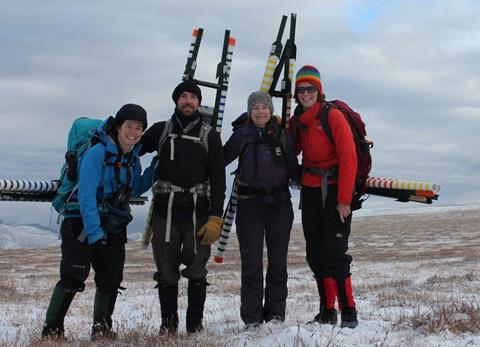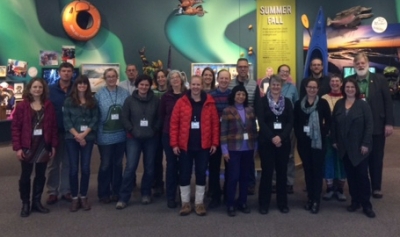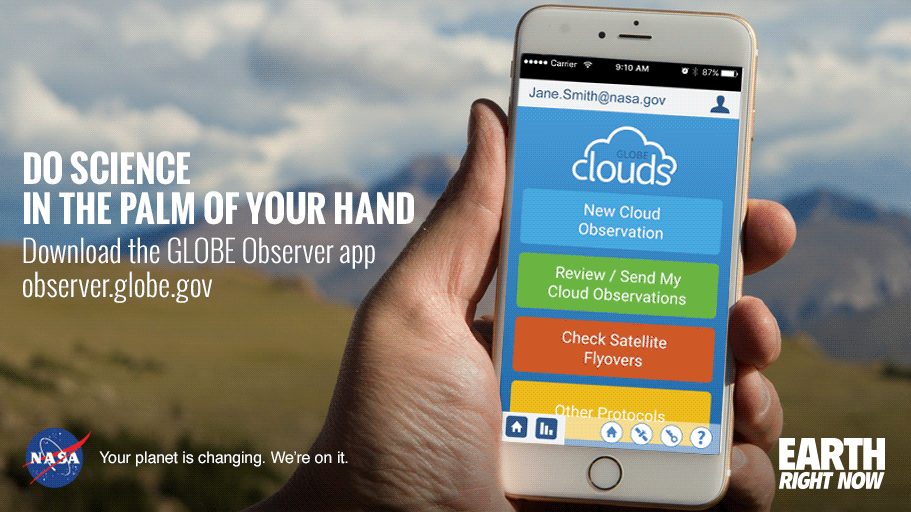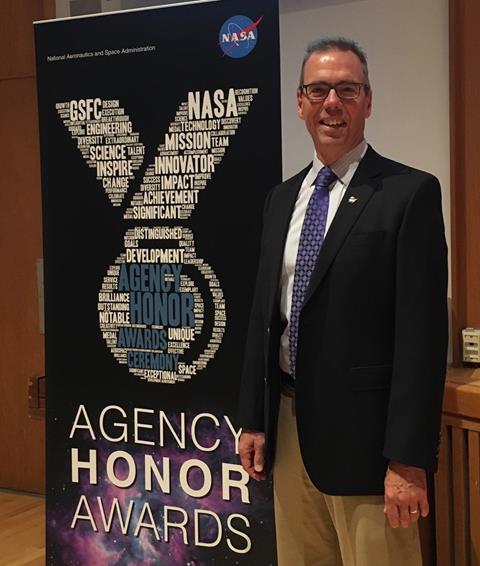Note from ABoVE Leadership:The ABoVE Leadership Team has been busy in recent months with a wide range of efforts related to coordinating activities with our Alaskan and Canadian partners, academic researchers and a range of ABoVE stakeholder organizations. We have also been reviewing and adding new affiliated projects, initiating the flight planning process for both the new airborne science projects and the ongoing ABoVE projects, managing support and infrastructure for field measurements, coordinating educational and media outreach activities, and exploring synergies with other US and international agency programs and satellite missions in development. The Leadership Team has also been actively participating in many of the disciplinary working group telecons and webinars, which are producing compelling new results and facilitating greater coordination among the 61 projects that currently comprise the overall ABoVE effort. We are excited to see the progress being made on this front! Last but not least, we have also been planning the next ABoVE Science Team Meeting scheduled for January 17–20, 2017 in Boulder, Colorado. Because of the timing of the airborne selections and other recent projects added under the ABoVE umbrella, the agenda has been dynamic and rapidly evolving. Nevertheless, representatives from all ABoVE projects, both ongoing and newly added, should plan to attend the 1.5 day Science Team Meeting beginning January 19th and ending mid-day on the 20th. Those interested are also welcome to participate in the 1.5 day airborne science planning meeting beginning mid-day on the 17th. Both of these meetings will generate new advances and greater coordination of the overarching ABoVE objectives. We are planning a poster session for each of these meetings so please plan on bringing project specific posters. Unfortunately because of space limitations at the Boulder venue, we can again only accommodate two participants from each ABoVE project, but we encourage bringing posters that represent the activities of the broader group. We plan to organize an Open Science Team Meeting to take place sometime in 2018 that will allow and encourage everyone to attend. We look forward to seeing you in Boulder if not sooner. -Scott, Chip, Peter, Eric and Hank New Airborne Campaign Selections:Chatterjee, Abhishek: GEOS-5 Forecasting and Modeling in Support of ABoVE airborne research Chatterjee-01 Drewry, Darren: Airborne Solar Induced Chlorophyll Fluorescence to Characterize Arctic Boreal Zone Phenology and Productivity Drewry-01 Huemmrich, Karl (Fred): Causes and consequences of arctic greening: the importance of plant functional types Huemmrich-01 Iwahana, Go: Quantification of thermokarst and carbon release in ice-rich permafrost regions Iwahana-01 Miller, Charles (Chip): Imaging Arctic Methane Plumes Miller-C-05 Schaefer, Kevin: The Airborne InSAR and PolSAR Permafrost Dynamics Observatory Schaefer-06 Smith, Laurence: Sensitivity of Arctic-Boreal surface water to permafrost state Smith-L-01 Sweeney, Colm: Airborne seasonal survey of CO2 and CH4 across ABoVE Domain Sweeney-01 Tabatabaeenejad, Alireza: Estimation of Belowground Biomass and Permafrost Active Layer Properties Using Radar and Lidar Measurements Tabatabaeenejad-01 New Affiliated ProjectsD'Arrigo, Rosanne: Determining the Vulnerability and Resilience of Boreal Forests and Shrubs across Northwestern North America D'Arrigo-01 Marsh, Philip: Hydrology, snow and permafrost in the western Canadian Arctic Marsh-01 Touzi, Ridha: Investigation of the added value of L- and P-band PolinSAR for permafrost characterization and mapping Touzi-01 Wunch, Debra: Atmospheric Total Column Measurements of Carbon Dioxide and Methane over the ABoVE Domain Wunch-01 Special AcknowledgementsPETER GRIFFITH Peter Griffith has been awarded NASA’s Outstanding Public Leadership Medal for his leadership supporting NASA’s carbon cycle and ecosystems programs. Jeffery Masek, Chief of the Biospheric Science Laboratory at Goddard Space Flight Center, nominated Peter, saying "Dr. Griffith has played a vital role in coordinating and managing carbon cycle and ecosystems research across NASA, managing logistics for NASA field programs, and in furthering interagency partnerships among NASA, NOAA, DOE, and other partner agencies. In so doing, he has significantly advanced NASA's role within the U.S. Carbon Cycle research community, and enhanced the quality of the science resulting from NASA's investments". Logistics SupportSuccessful first field season! The safety and logistics team is looking forward to the next seasons to come and are hopeful to see more projects using our facilities in Fairbanks and Canada. Here are a few snapshots from the field: 
Andrew Maguire, a graduate student at the University of Idaho, is pictured here winterizing sensors and data loggers at one of the six plots on the Eitel-01 project located just south of Atigun Pass in Northern Alaska. The goal of the project is to use lidar, passive spectral, and ecophysiological approaches to link Forest Tundra Ecotone structure and function. The Fairbanks Logistics Office provided field assistance, truck and communication equipment. Laura Prugh, Chris Cosgrove, Anne Nolin, and Madelon van de Kerk with the Prugh-01 project. Check out their blog post for more information about their field trip deploying 22 stations with snow stakes, ibuttons, and cameras, used to examine how snow characteristics affect Dall sheep movements and survival. The Fairbanks Logistics Office provided a truck and various equipment to assist with their field work. 

From the left to right are Isabella Goff Maidoff and Lily Tilton (two of the many students from Martha's Vineyard Public Charter School, who sampled vegetation and soils at Natali's field site along the Dalton Highway as a part of their Alaskan field expedition) , Jennifer Watts (University of Montana), Sarah Sackett (ABoVE Fairbanks Logistics Coordinator), and Sue Natali (Woods Hole Research Center and project lead on the project site). Natali-01 Check out the Safety and Logistics webpage for the most up to date information. If you have any questions or needs, please contact safety@cce.nasa.gov. Earth to SkyA one day mini-Earth to Sky was held in Fairbanks, Alaska, on October 21st, immediately following the National Park Service Centennial Science Workshop. We will soon be recruiting science team members to participate in the next Earth to Sky, which will take place in Yellowknife, Canada, 18-20 April, 2017. 
GLOBE
GLOBE Observer is a fun and simple way to contribute to Earth science wherever you are. Just download the app and follow the prompts to observe clouds daily. If you are interested in Earth science research, all citizen science cloud data are available to you. The app will expand to include land cover and mosquito observations in 2017. Please feel free to contact Holli Riebeek Kohl with questions or to get involved
CalendarDec 17, 2016: Airborne Campaign Planning Workshop, Park Central Hotel, San Francisco, CA Jan 17–18, 2017: Airborne Science Planning Meeting, Boulder, CO Jan 19–20, 2017: ABoVE 3rd Science Team Meeting, Boulder, CO April 18–20, 2017: Earth to Sky Regional Workshop, Yellowknife, Canada Visit ABoVE Meetings for updated information on meetings |
National Aeronautics and Space Administration

ABoVE
- NASA Official: Jon Ranson | Curator: Carla Evans
- Last Updated:
- Download Acrobat Reader


